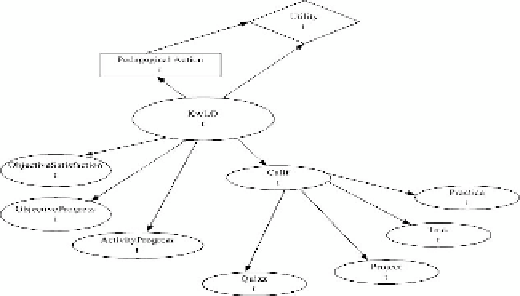Information Technology Reference
In-Depth Information
3 Tutor Module
The main component of the tutor module, also known as instructional or educational
model, is the sequencing model that contains the sequence of LOs to be presented to
an operator as a self instructional nontraditional course. The adaptive sequence is
represented as a decision network that selects the best pedagogical action for each
specific operator. The goal is to present to the operator the learning materials that
better fits his learning needs.
A decision network or influence diagram represents information about the
current state of the tutor, their possible actions, the state resulting from the action of
the tutor and the usefulness of the resulting state. It can be seen as an extension to
Bayesian Networks with random nodes, incorporating decision nodes and utility
nodes. The sequencing model consists of the following random variables (see Fig. 3):
knowledge of LO, satisfaction of the objective, progress of the objective, progress of
the activity, score of LO, quiz, project, task, practice.
Fig. 2.
Decision Network.
As shown in the figure above relations between the nodes are causal. KwLO random
node has four values: Very Good, Good, Enough and Not Enough. The decision node
considers the pedagogical actions that will be evaluated according to the utility
function to select the best one, and in this work four possible pedagogical actions are
identified: LO challenge, Next LO, Repeat refined and Repetition of LO. The
calibration of the decision network is given by the experts in the domain. The utility
table entries are set based on the teacher's experience about the best over all possible
pedagogical actions according to the given knowledge state and the student's
interaction. Adding the evidence of the previous Knowledge of the LO's random
node, as well as the previous pedagogical action the DN was turned into a dynamic
decision network (DDN).

Search WWH ::

Custom Search